1. Youngstown, Ohio
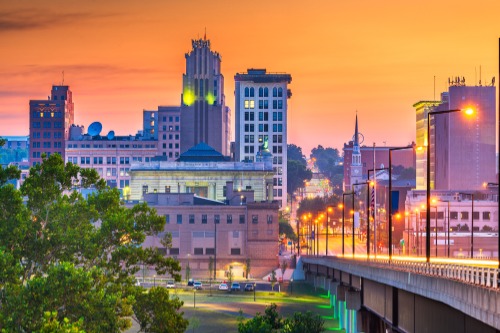
Youngstown was a steel giant, with its economy almost entirely dependent on the industry. For much of the 20th century, the city had a strong middle class, low unemployment, and a thriving downtown. But when the steel mills shut down in the 1970s and 1980s, Youngstown was left devastated. The local economy collapsed, and population decline followed, leaving behind a struggling city, according to Alexia Fernández Campbell from The Atlantic.
Efforts to diversify the economy have had mixed results, with tech startups and small businesses trying to fill the void. However, Youngstown still faces high crime rates, abandoned buildings, and a lack of well-paying jobs. The city’s story has been used as an example of the dangers of relying too much on one industry. Youngstown was once a steel empire, but it has spent decades trying to recover from its fall.
2. Camden, New Jersey
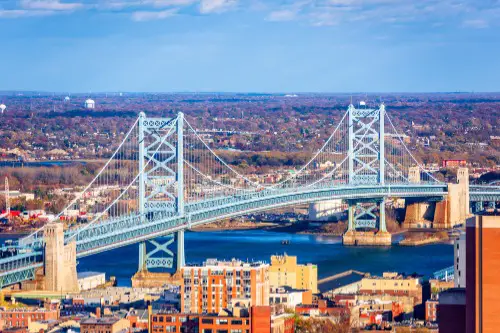
Camden was once a thriving industrial hub, home to major corporations like RCA and Campbell’s Soup. In its heyday, the city had a bustling waterfront, steady employment, and a growing population. But as manufacturing jobs disappeared in the mid-20th century, the local economy collapsed, leading to widespread poverty and crime. White flight and government corruption only worsened the decline, leaving Camden struggling to recover, according to Matthew DeLuca from NBC News.
Despite recent revitalization efforts, Camden still faces severe economic challenges. Crime rates remain high, and much of the city’s infrastructure is in poor condition. While some businesses and developments have returned, they haven’t been enough to transform the city completely. Once a symbol of American industrial success, Camden remains a struggling city searching for a way forward.
3. Buffalo, New York
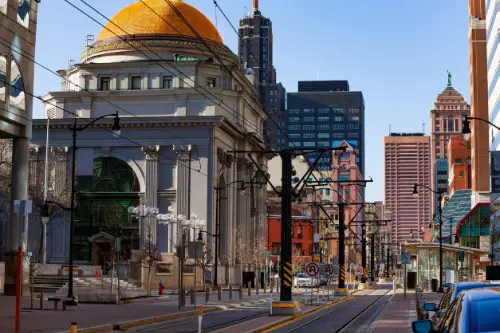
Buffalo was poised to become a major shipping and industrial center thanks to its prime location on the Great Lakes. The opening of the Erie Canal in 1825 made it a crucial transportation hub, fueling rapid growth and prosperity. By the early 20th century, Buffalo was booming with steel mills, grain elevators, and a thriving economy. But the decline of heavy industry, coupled with the opening of the St. Lawrence Seaway, drastically reduced its importance.
As jobs disappeared, so did much of the city’s population, leaving behind vacant buildings and struggling neighborhoods, according to Carmen J. Bartolotta from the State University of New York, Buffalo State College. Urban renewal projects in the mid-20th century demolished historic areas without bringing the promised economic resurgence. While recent redevelopment efforts have brought some progress, Buffalo never regained its former glory. It remains a city with potential, but its best days may still be in the past.
4. Pontiac, Michigan
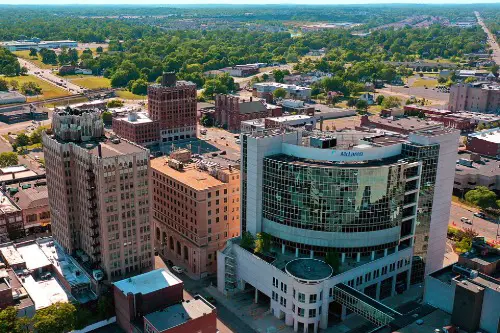
Pontiac was supposed to be a major automotive city, rivaling Detroit as a hub for car manufacturing. General Motors had a massive presence here, and the city thrived for much of the 20th century. But when the auto industry restructured and factories closed, Pontiac was left without its economic engine. The city suffered massive job losses, population decline, and financial instability that led to state intervention.
In 2009, Pontiac’s government was placed under emergency financial management due to a crushing budget deficit. Schools closed, public services were cut, and even the iconic Silverdome—once home to the Detroit Lions—was abandoned. Despite some redevelopment efforts, many areas remain economically depressed. Pontiac was once a symbol of automotive success, but today, it struggles to reinvent itself, according to Emily Wax-Thibodeaux from The Washington Post.
5. Flint, Michigan
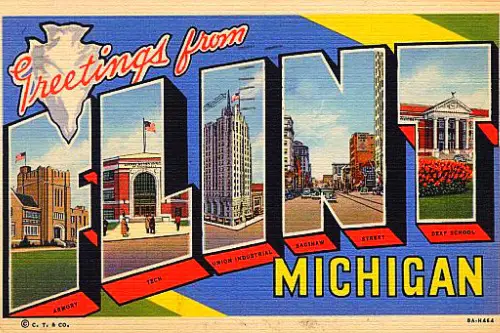
Flint was once a booming auto city, thanks to General Motors’ presence and a thriving manufacturing sector. In the mid-20th century, Flint had a strong economy, good schools, and a growing population. But as the auto industry downsized, Flint’s economy collapsed, leading to high unemployment and widespread poverty. The situation worsened in the 2010s with the infamous water crisis, which further damaged the city’s reputation.
Decades of neglect and mismanagement have made recovery difficult, according to Max Holleran from The New Republic. While some revitalization efforts have been made, Flint still struggles with crime, economic instability, and population loss. The water crisis left deep scars, both financially and emotionally, on the community. Once a model of American industrial success, Flint is now known more for its hardships than its achievements.
6. East St. Louis, Illinois
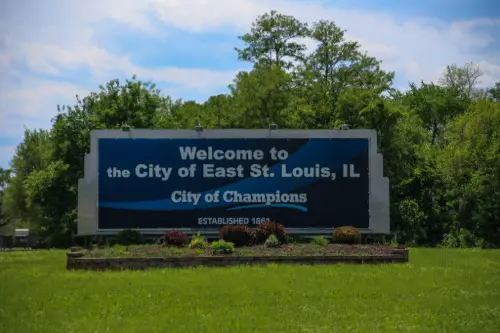
East St. Louis was once a prosperous industrial city with steel mills, railroads, and a thriving workforce. During the early 20th century, it was one of the most important economic centers in the Midwest. But racial tensions, political corruption, and economic downturns caused businesses to leave and poverty to skyrocket. By the 1970s, the city was in serious decline, plagued by crime and deteriorating infrastructure.
Attempts at revitalization have been slow and largely unsuccessful. Crime rates remain among the highest in the nation, and many neighborhoods are filled with abandoned buildings. Some redevelopment projects have brought small improvements, but large-scale transformation remains elusive. Once a symbol of industrial success, East St. Louis is now better known for its struggles than its potential.
7. Rochester, New York
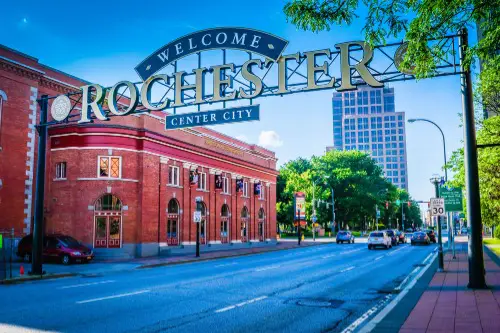
Rochester was once a major technology and photography hub, home to companies like Kodak, Xerox, and Bausch & Lomb. During the 20th century, it had a booming economy, strong job market, and vibrant middle class. But as Kodak and Xerox struggled to adapt to digital technology, the local economy took a massive hit. Thousands of jobs were lost, and Rochester never fully recovered from the decline of its biggest employers.
Today, the city is trying to rebuild through education, healthcare, and smaller tech startups. However, it still faces economic challenges, high poverty rates, and struggling neighborhoods. Many of its once-bustling industrial areas remain vacant, reminders of a lost golden era. Rochester had all the potential to be a lasting tech powerhouse, but its reliance on a few big companies proved to be its downfall.
8. Scranton, Pennsylvania
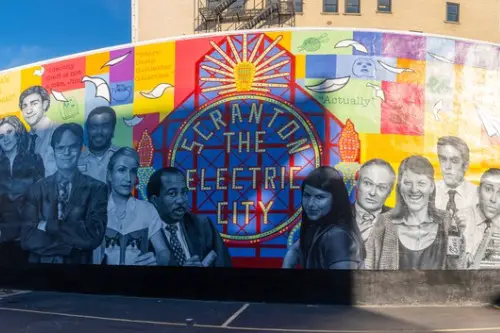
Scranton was once a booming coal and railroad town, supplying energy to fuel America’s industrial growth. In the early 20th century, the city was thriving with a strong working-class community and steady economic growth. But as coal mining declined and railroads became less important, Scranton lost its economic backbone. By the mid-20th century, job losses and population decline left the city struggling to stay relevant.
In recent years, Scranton has tried to reinvent itself with tourism and a service-based economy. However, it still faces high unemployment, aging infrastructure, and financial troubles that have put the city in debt. While shows like The Office have given it cultural recognition, that hasn’t translated into economic revival. Scranton was once a symbol of blue-collar success, but it has never fully recovered from its industrial decline.
9. Birmingham, Alabama
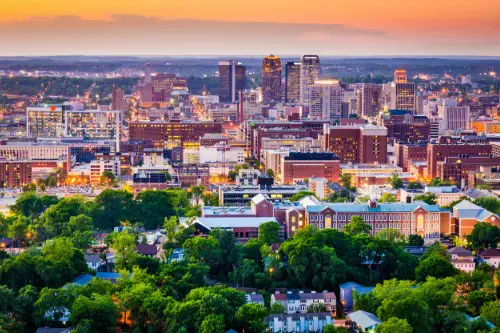
Birmingham was once called the “Pittsburgh of the South” because of its booming steel industry. The city grew rapidly in the early 20th century, with a strong economy fueled by steel production, coal mining, and manufacturing. But when the steel industry collapsed in the late 20th century, Birmingham lost its economic foundation. Job losses, suburban flight, and racial tensions contributed to a long period of decline.
Although the city has made strides in healthcare and banking, it still struggles with poverty and crime. Many of its once-thriving neighborhoods remain economically depressed, and efforts at revitalization have been slow. Downtown Birmingham has seen some improvements, but it’s a far cry from the industrial powerhouse it was meant to be. The city had the potential to be the economic heart of the South, but it never fully reached that status.
10. Gary, Indiana
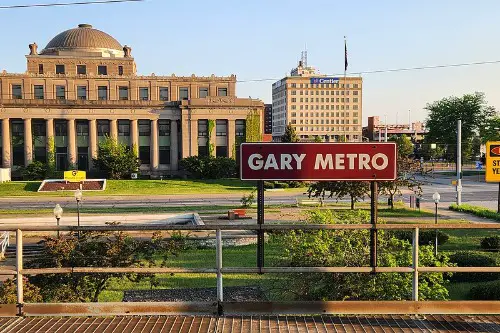
Gary was once a rising industrial powerhouse, built around the U.S. Steel plant that promised steady jobs and economic growth. In the mid-20th century, the city thrived with a strong middle class, growing infrastructure, and a promising future. However, as the steel industry declined in the 1970s and 1980s, businesses shuttered, and jobs disappeared almost overnight. Today, Gary is known for abandoned buildings, high crime rates, and a dwindling population that never bounced back.
Despite occasional redevelopment efforts, the city struggles to regain its footing. Many of its historic structures have fallen into disrepair, turning parts of the city into eerie ghost towns. Population decline continues, with residents moving elsewhere in search of better opportunities. Once a beacon of industrial success, Gary now stands as a cautionary tale of economic dependence on a single industry.
11. Stockton, California

Stockton was once a thriving port city, expected to be a major economic hub in Northern California. Its strategic location made it a key center for agriculture, shipping, and later, real estate development. But after the 2008 financial crisis, Stockton became one of the first major U.S. cities to declare bankruptcy. Foreclosures skyrocketed, businesses closed, and crime rates soared as the economy tanked.
While Stockton has made some progress since its bankruptcy, it still struggles with economic instability. Many neighborhoods remain blighted, and the city has yet to fully shake its reputation for crime and financial mismanagement. Attempts at revitalization, including investments in education and tech, have shown some promise but haven’t been game-changers. Stockton was supposed to be a booming inland port, but financial missteps kept it from reaching its full potential.
12. Bridgeport, Connecticut
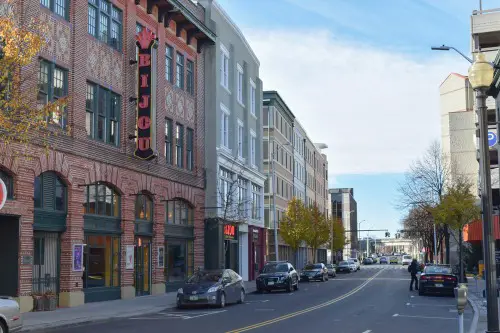
Bridgeport was once a thriving industrial city, home to shipbuilding, manufacturing, and a strong economy. During World War II, it was a key center for arms production, and its economy flourished. But after the war, factories closed, jobs disappeared, and the city entered a long period of economic decline. Crime rates soared, poverty increased, and Bridgeport became one of the most struggling cities in Connecticut.
Recent attempts to revitalize the city have included waterfront redevelopment and investment in arts and entertainment. However, the city still struggles with economic inequality, underfunded schools, and high unemployment. Many of its historic neighborhoods remain in disrepair, and large-scale investment has been slow to arrive. Bridgeport was once a symbol of industrial prosperity, but it has yet to reclaim its former status.
13. Rockford, Illinois
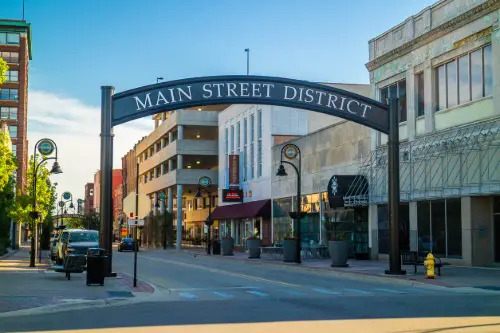
Rockford was once a booming manufacturing hub, known for machine tools, furniture production, and a strong blue-collar workforce. In the mid-20th century, it had one of the lowest unemployment rates in the country. But as manufacturing jobs moved overseas, Rockford was hit hard by deindustrialization. By the 1980s and 1990s, the city had one of the highest unemployment rates in Illinois.
Despite efforts to rebuild its economy with healthcare and aerospace industries, Rockford still faces economic struggles. Crime rates remain high, and many areas of the city suffer from urban decay. Some downtown revitalization projects have helped, but the city is far from being the manufacturing powerhouse it once was. Rockford had all the makings of a major industrial city, but globalization and economic shifts left it behind.
14. Charleston, West Virginia
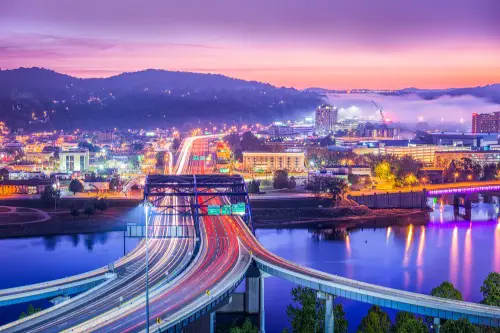
Charleston was supposed to be a major economic and political hub for Appalachia, thanks to its location and natural resources. The coal industry fueled its growth, and for much of the 20th century, it thrived as a center of commerce and government. But as the coal industry declined, Charleston struggled to find new economic drivers. Population decline, job losses, and environmental concerns all contributed to its stagnation.
Today, Charleston faces economic hardship, an aging population, and ongoing struggles with opioid addiction. Efforts to diversify into healthcare and tourism have had some success but haven’t been enough to bring widespread prosperity. Many young residents leave in search of better opportunities, further draining the city’s potential. Charleston was once poised to be a key city in Appalachia, but its reliance on coal held it back.
15. Hartford, Connecticut
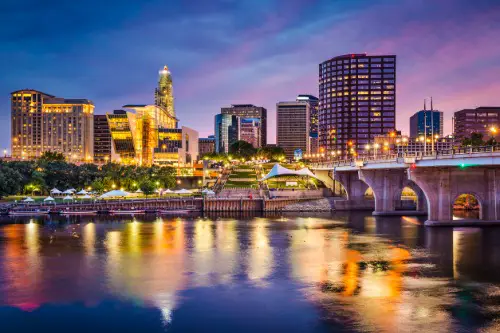
Hartford was once a wealthy city, known as the “Insurance Capital of the World” because of its many insurance companies. In the mid-20th century, it had a thriving downtown, good jobs, and a strong economy. But as suburbanization increased and industries changed, Hartford’s tax base shrank, and economic struggles set in. By the early 2000s, the city was struggling with budget deficits, high crime, and failing schools.
Despite some revitalization efforts, Hartford still faces significant financial instability. Many companies have moved their headquarters elsewhere, and the city has even considered bankruptcy at times. While there have been improvements in downtown development, the economic struggles remain deep. Hartford was once a symbol of wealth and stability, but today it struggles to maintain that reputation.


